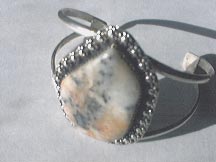|
AZentertain: Arizona Gold Rush: Gold Rush The rush for gold in pre-ArizonaLegends are thicker than factBy Robert Zucker The Conquistadors took it. The Spanish Jesuits hid it. The Spanish Franciscans found it. Gold dripped from the mountains. One thing is certain, thousands of pounds of the precious gold was extracted by the Americans since the late 1880s. (1) The famous legends of the Santa Catalina mountains claims that the Spaniards forced the natives to work gold mines in the mountains. The location of the mines was lost in time, but some parts of the legend gives additional clues. That is what spawned the Lost Escalante mine and Iron Door Mine legends that brought prospectors to Arizona's Santa Catalina mountains. There, they discovered gold. Lots of gold. Some of it may still remain. 1500s: The Conquistadors may have found the gold firstThe expedition through North America by Coronado to find the Seven Cities of Cibola, lead the group through what is known today as Arizona. (more to be added) 1700s: New Spain was rich in gold and spawns the lost mine legendWhile silver and copper mining was conducted by the newly settled Spaniards throughout Pimeria Alta in the late 1600s, gold was also a sought after commodity. Pimeria Alta is the name given to the land which eventually became Arizona. Several accounts mention that the Spanish Jesuits operated the mines- which would place it in the early 1700's when Father Eusubio Kino established the first Spanish settlements from central Mexico north to the Tucson valley. Kino help build the San Xavier del Bac mission southeast of present-day Tucson. At the time, only rancherias dotted the valley. The natives outnumbered Spanish settlers, clergy and military. But, no records are available of the gold or other minerals extracted from the mountains. Although one of the reasons Kino came to New Spain was to enforce an edict from the King of Spain that forbid enslaving natives to work in the mines. Yet, the legend of a Spanish gold mine in the Catalinas is based on some noted discoveries. In the mid 1990's several U.S. agencies published a study of mineral resources in the Catalinas. It extensively discussed the history of gold placers throughout the mountain range based on its own collected literature and samlings. The report makes several references to Spanish gold mining,
Read more about The Lost Mine and the Lost Escalante Mine. 1900s-2000s: Gold still in the Catalinas todayWhile the Spanish Jesuits, settlers or military may have mined the Catalinas for gold, they didn't leave any records. Over the last century several reports of Spanish objects found in the Catalinas are the only evidence. Reports of finding gold in the Old Hat and Campo Bonito mining districts spurred the Arizona Gold Rush of the 1880s. Thousands of ouncess of gold had been taken from the mines, according to newspaper accounts and mining reports. A test placer conducted in 1882, by Dave McGee of the Little Hill Mines, Inc., at one of the sites in the Cañada del Oro discovered that
In 1901, the Mohave Miner reported a story from the Wickeberg News that descried a gold find in the Catalinas:
Pinal County, where the Santa Catalina mountains, was a major gold producing area. At the time, gold was valued at only $20.67 per ounce. According to the Bureau of Mines:
Read more about:
|
"Treasures of the Santa Catalinas" is NOW Available on Amazon.com.Read sample chapters from the new book "Treasures of the Santa Catalina Mountains" with over 600 pages and more than 1,200 footnotes to the source material. Download a
free sample of "Treasures of the Santa Catalina Mountains" and purchase the full print or Kindle version
on amazon.com. Read samples chapters from the book below.
|
